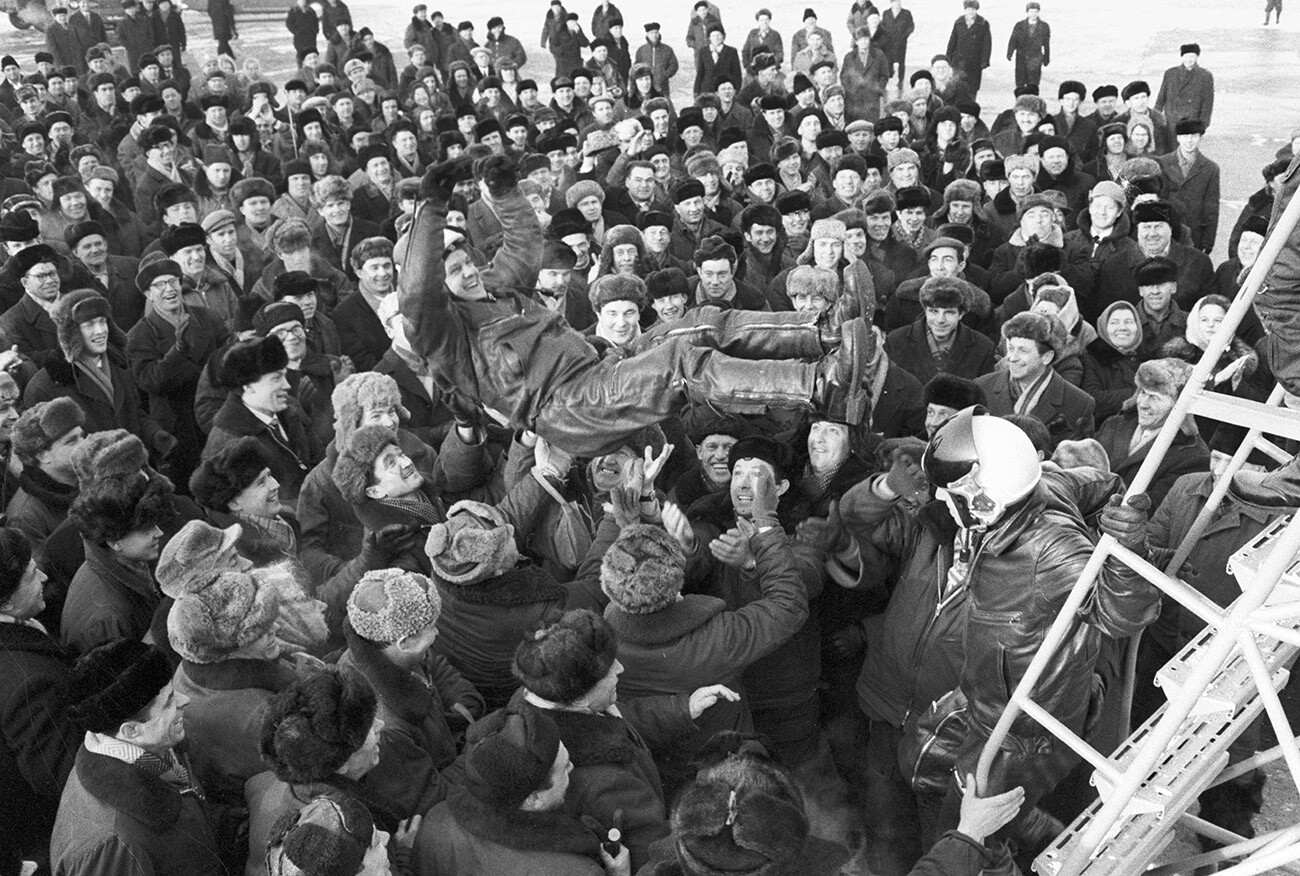Why did the Soviet supersonic passenger airplane stop flying?

The creation of supersonic civilian airplanes in the world was conceived soon after the end of World War II. And, in the 1960s, the idea was put to practice.
In 1962, Britain and France agreed to jointly develop a supersonic airliner named ‘Concorde’ (from French - “Harmony”, ‘Agreement’). At the same time, the USSR began to work on its own project - the Tu-144.
 Tu-144 supersonic passenger airliner.
Tu-144 supersonic passenger airliner.
Each of the countries sought to send their airplane into the sky before their competitor. In the end, the Soviet Union managed to do it first.
On December 31, 1968, the airliner developed by the Tupolev Design Bureau made its first test flight that lasted 37 minutes. The Concorde did not take off until March 2, 1969.
 After the first test flight.
After the first test flight.
The Soviet plane was slightly faster than its Western counterpart (2,500 km/h vs. 2,150 km/h) and could climb to a higher altitude (19,000 meters vs. 18,300 meters). “They resemble each other in many ways,” claimed aircraft designer Alexei Tupolev. “Nothing surprising here - both airplanes are of the same class: the number of passengers, speed, flight altitude, weight are almost identical. The Identity of the main characteristics caused a similarity in appearance.”
Significant differences in design had to do with the fact that the Concorde was intended for intercontinental flights from Europe to the United States and back, while the Tu-144 flights were to take place over the territory of the Soviet Union.
The Franco-British airplane could, therefore, go over the deserted ocean at a supersonic speed at a lower altitude than the Soviet airliner. The latter had to climb higher, so that the walls and windows in houses on the ground did not shake and people’s ears did not pop. Hence, the differences in weight, fuel consumption and a number of other indicators.
 Chief aircraft designer Aleksei Tupolev presenting the new Tu-144 supersonic passenger airliner to journalists.
Chief aircraft designer Aleksei Tupolev presenting the new Tu-144 supersonic passenger airliner to journalists.
In the early 1970s, the launch of the serial production of the Tu-144 was overshadowed by a disaster. On June 3, 1973, during the international air show Le Bourget, the first serial Soviet supersonic airliner fell into pieces in the air and crashed down on a residential area.
Six crew members and eight residents of the village died as a result. The investigation did not reveal any malfunctions in the Tu-144’s systems and never managed to determine the cause of the airplane’s crash.
 Remnants of the Tu-144 crashed during the international air show Le Bourget.
Remnants of the Tu-144 crashed during the international air show Le Bourget.
Nevertheless, the production of the Tu-144 continued. A total of 16 planes were built. Two of them operated the Moscow-Alma-Ata route, which launched in 1977.
The flight took place at an altitude of up to 17,000 kilometers at a speed of 2,000 km/h. The distance of 3,260 kilometers was covered by the airliner in two hours instead of five hours by conventional airplanes.
 During the Moscow-Alma-Ata flight.
During the Moscow-Alma-Ata flight.
“The supersonic plane started to gain altitude with such a colossal pitch angle that it felt completely as if you were sitting in a launching spaceship: the feet above the head, the rumble of roaring engines and overload, which lasted, as I felt, two or three minutes after takeoff…” recalled one of the passengers. “Gradually, the pressure in the back of the seat began to decrease. The angle it gained altitude with also decreased… Quite soon, when we had not yet reached the clear sky, it was reported through a loudspeaker: “Dear passengers, our altitude is 11,000 meters, the speed is 1,200 kilometers per hour…” Hooray, we are supersonic!”
 The work to assemble a Tu-144 supersonic passenger airliner.
The work to assemble a Tu-144 supersonic passenger airliner.
“An altitude of 17,000 meters is not 10,000 or even 12,000… The cloud cover over which we were flying extended so far below that it almost seemed to lie on the ground. This is especially noticeable where, in the breaks in the clouds, you can see the ground and shadows from the clouds, almost coinciding with the contour of the clouds themselves. In front of them, there is a whole abyss of space flooded with the dazzling light of the Sun,” wrote an amazed passenger.
 Tu-144.
Tu-144.
Tu-144 planes had conducted 55 flights and carried 3284 passengers along the route Moscow-Alma-Ata by 1978, when it was decided to stop the commercial use of supersonic airliners in the USSR. The official reason was the emergency landing of the airplane during the testing of a new engine in May of that year. As a result of the accident, two crew members were killed.
Yet, the real reason was the economic inexpediency of supersonic passenger aviation. Tickets for a Tu-144 flight cost almost twice as much as conventional ones, so the airplanes often flew half-empty. Costs of fuel, aircraft maintenance and construction of appropriate infrastructure on the ground were quite impressive. At the same time, the opening of commercial routes to Europe was not considered.
 Tu-144 supersonic passenger airliner.
Tu-144 supersonic passenger airliner.
After production was stopped, the existing Tu-144 airliners were used for cargo transportation, training and test flights. In 1993, the aircraft began to be used in joint Russian-American research programs.
The fate of Tu-144’s Western counterpart appeared to be more fortunate. There were quite a few businessmen in Europe and the United States who were willing to splash out large sums of money to fly across the ocean in just three and a half hours. ‘Concordes’ stopped operating only in 2003, never fully recovering the industry’s trust after the tragic Air France crash in 2001. Fuel prices then began to soar, thus temporarily putting an end to global supersonic passenger transportation.

